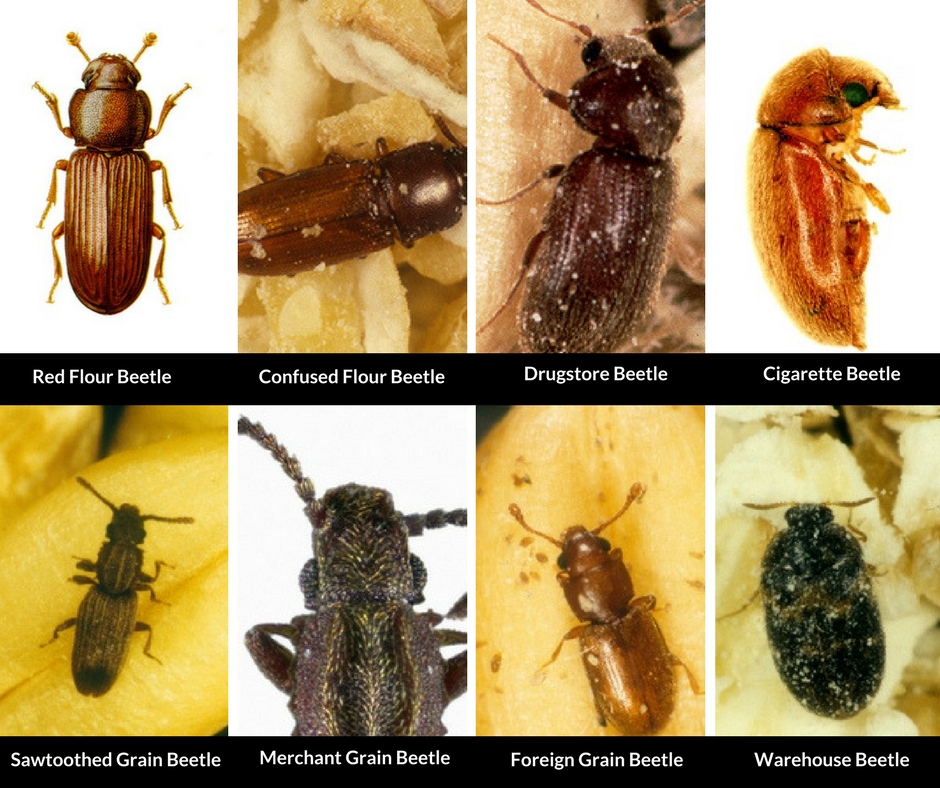PEST LIBRARY / PANTRY PESTS / HOW TO GET RID OF PANTRY PESTS
Pantry pests are exactly what their name describes - pests that live in your pantry and feed off your packaged goods. Anyone can have pantry pests in their kitchen, even if your kitchen is spotless.
The most common pantry pests are moths, weevils and small beetles. Pantry pests are more of a nuisance than anything, as they are not dangerous. They will not bite or sting you, and they also will not cause any destruction in your home. Getting rid of pantry pests can be time consuming, but is possible. In most cases, you are able to get rid of a pantry pest infestation on your own, but it is beneficial to get it looked at by a professional pest control company.
There are three common pantry pests - moths, weevils and small beetles.
Moths
Moths are the most common pantry pest, and one of the easiest to spot, as they are usually found flying close to their food. Moths commonly eat chocolate, dried fruit, bird feed and dry pet food.
Indian meal moths are 1/2 inch long with a ¾ inch wingspan. They are a brownish colour with a gray band at the base of their wings, with reddish or copper markings on the outer part of their wings. The angoumois grain moth is 1/2 inch long and pale yellow brown.
Angoumois Grain Moth

Indian Meal Moth

How To Get Rid Of Pantry Moths
Getting rid of pantry moths involves the same process as eliminating other pantry pests:
If you have any doubt, contact your local pest control company to help you get rid of pantry moths.
Beetles
There are numerous types of pantry beetles - red flour beetles, confused flour beetles, cigarette beetles, drugstore beetles, sawtoothed grain beetles, warehouse beetles, foreign grain beetles and merchant grain beetles. Pantry beetles are typically small, with wings. Some fly while other crawl.

Weevils
Weevils are typically found in flour and cereal. Weevils are 2.5-3.5 mm in length, with brown, slender bodies and are most easily distinguished by their long snouts. There are a variety of weevils, such as the granary weevil, rice weevil and the maize weevil.
Rice Weevil

Granary Weevil

Pantry pests enjoy grains like flour, cereal and processed food, but also enjoy dried fruit, nuts and spices. They can and will feed on any dried food that is stored at room temperature. Opened packages that are not sealed properly are an easy target, but they can also get into unopened packages too.
Beetles and moths have four stages of development: egg, larva, pupa and adult. You can find these pests in your food at all stages of development, but it is unlikely you will see the eggs in the egg stage, as they are tiny.
No, pantry pests do not bite. They also do not sting, and are relatively harmless.
Pantry pests cause no damage to your home. If you find pantry pests in packaged goods, you will have to discard the items.
For a business, pantry pests can be costly f you have to throw out large volumes of infested product and inventory.
If you think you have a pantry pest infestation, it is beneficial for a pest control company to inspect the area.
While it is natural to think that pantry pests are only found in homes, businesses have to be on the lookout for pantry pests as well. Much like homes, pantry pests enter businesses through gaps in the exterior of the building or through product purchased from a supplier. If you find even one infested pantry item it must be discarded immediately, and all other pantry products should be inspected to determine if an infestation has occurred, and how far it has spread.
There are a variety of different ways that an infestation can occur. In some cases, pantry pest infestations can be caused when the weather is warmer, and pantry pests find their way indoors through cracks in the exterior of your home. In most cases, pantry pests find their way indoors through food products brought into the home. The infestation can originate at the processing plant, the warehouse, the delivery vehicle, or the retail store you purchased from. Interestingly, the chances of becoming infested increase the longer a food item is stored at the same location.
Usually, the first sign of a problem is by seeing bugs crawling on kitchen countertops, moths flying around the kitchen, or caterpillars crawling up the walls or on the ceiling.
The next sign is the most obvious: if you check your packaged food and you find bugs, you probably have an infestation. Finding a lot of bugs is usually indicative of the infestation being there for quite some time.
If you need help getting rid of pantry pests, contact us! We've been helping homes and businesses eliminate pantry pest infestations for decades. If you're looking for a pantry pest exerminator you can trust, we're here to help!
NO RELIANCE ON PESTICIDE PRODUCTS - LEARN ABOUT OUR GREEN PEST MANAGEMENT SYSTEM